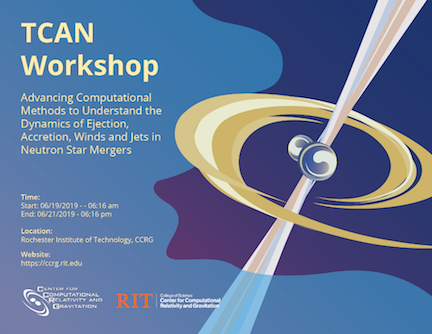We submitted a new paper investigating the dynamics of magnetized plasma accreting onto merging supermassive black holes including, for the first time, the effect of misaligned black hole spins.
The purpose of simulations like these is to investigate possible electromagnetic emission that could be generated by these systems. Supermassive black hole mergers are powerful sources of gravitational waves that will be detected by the future LISA mission, but, as simulations like ours show, they could also produce electromagnetic counterparts, that could be detected by future X-ray observatories, such as Athena.

